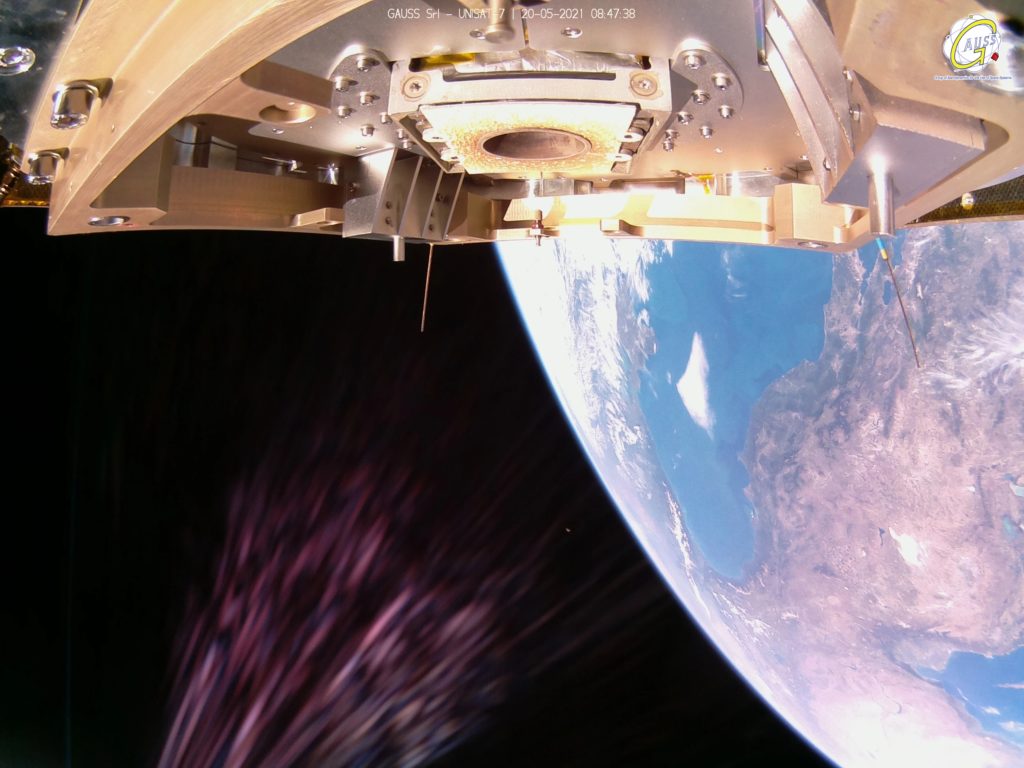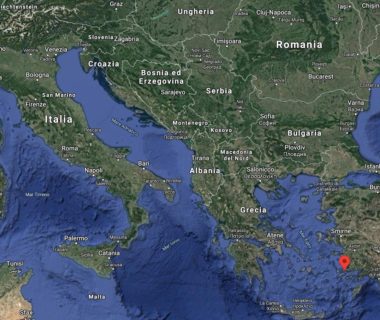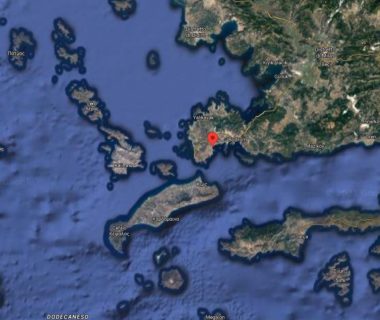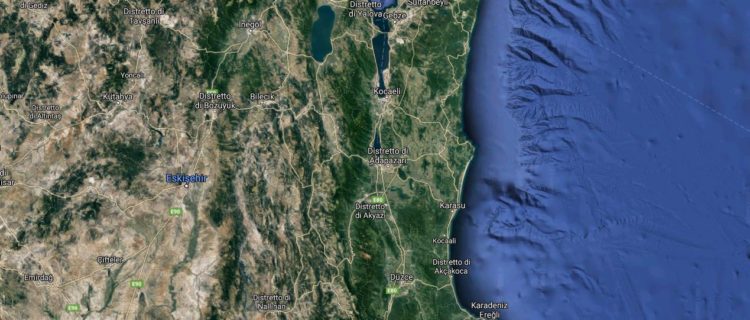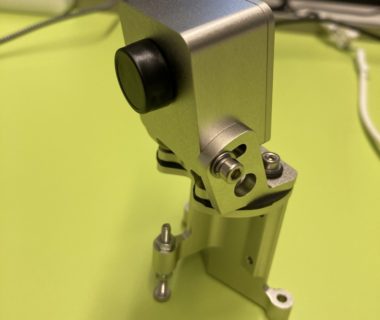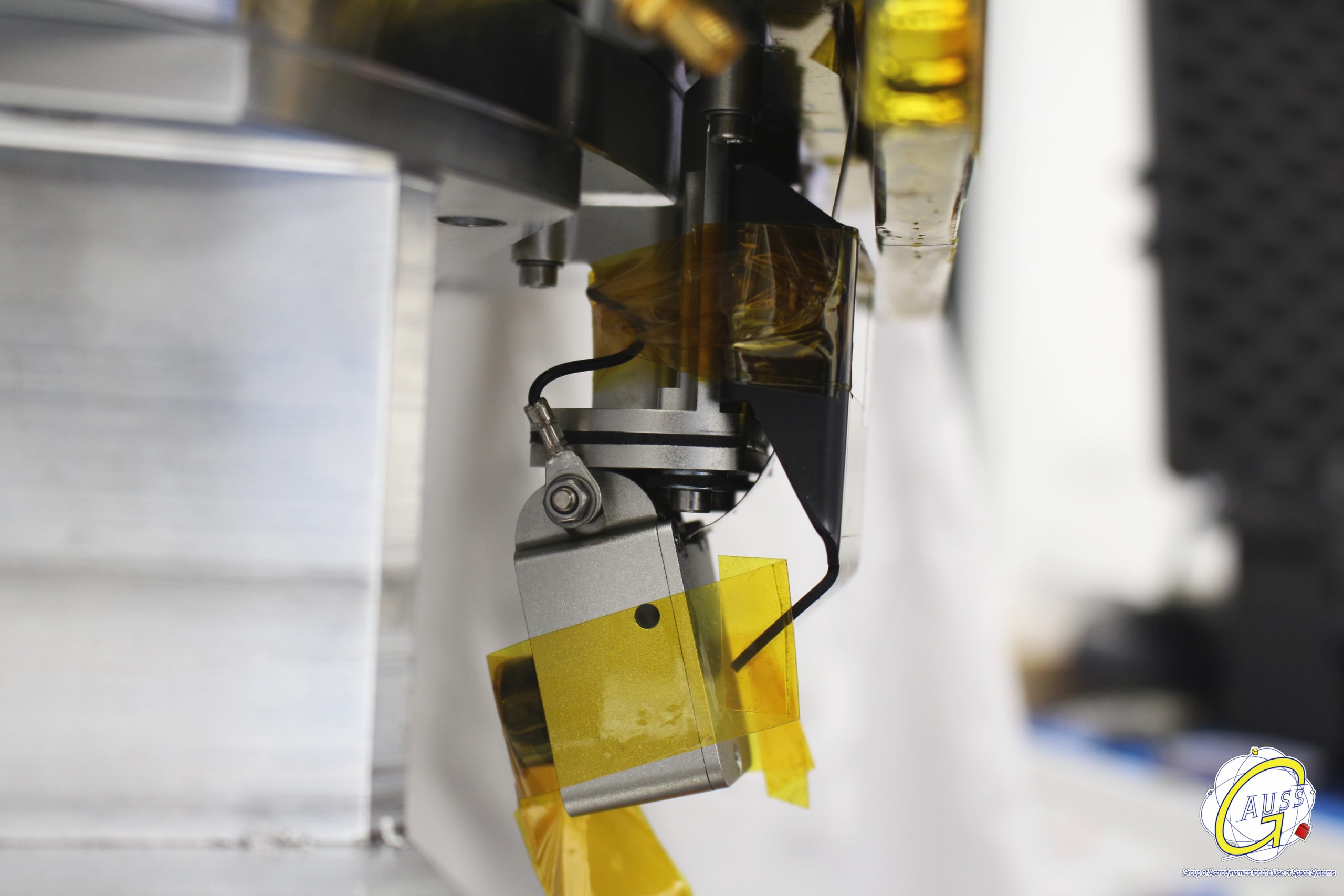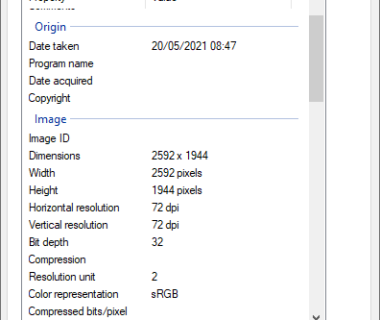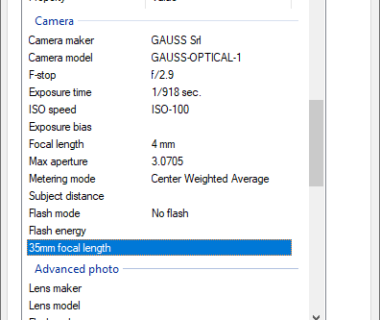The first picture downloaded from UNISAT-7 wide angle camera, the OPT1 Camera System.
OPT1 is a wide field-of-view Earth Observation Research System, developed by GAUSS Srl.
The image above was recorded on May 20th, 2021 at 08:47:38 UTC, during a pass over Turkey.
At that moment UNISAT-7 was directly over a point 5km West of Bodrum (37.0127°N, 27.3314°E), and this is confirmed by both TLE propagation and onboard GAUSS GPS navigation data.
The area visible in the image, near the right antenna, is the Iznik lake (40.4341°N, 29.5468°E) and the outskirts of Istanbul, Turkey (image is horizontally flipped).
The bottom of UNISAT-7 is visible: the pair of kill switches, the fixing plate attached in Baikonur and used for the release mechanism in the Soyuz CAS-500 launch mission, the T4i REGULUS engine at the center of the satellite and two monopole antennas.
OPT1 system was developed completely in-house by GAUSS, using COTS (Commercial off-the-shelf) and open-source components, and all firmware has been written internally by GAUSS personnel.
The system will be utilized to take pictures of the Earth from space, also during the activation of T4i REGULUS engine, as this camera system is fixed to the -Z side of the satellite.
It is composed of a 5Mpix CMOS RGB sensor, a fixed focus fish-eye objective and a Raspberry Zero used as OBDH.
The Raspberry Zero OBDH is connected to a COTS I2C RTC system that provides independent and continuous timing for the OBDH operation.
The field of view of the OPT1 lens is 155°.
The system includes an advanced picture processing algorithm that stores, organizes, watermarks, compresses, and splits the image file for subsequent download to the ground in data chunks.
OPT1 camera system has three shooting modes: single, multiple, and burst mode: the first takes a single picture, the second takes several pictures with a user-selectable pause between each picture, the third is used to take a specified number of pictures in the shortest time period.
A preview scripting algorithm is present on OPT1 camera system to download a preview mosaic of all the pictures taken, in order to aid ground operators in the selection of the most suitable image for download.
OPT1 was successfully activated in space two weeks after UNISAT-7 launch: housekeeping telemetry of the OBDH has confirmed the nominal status of all the hardware and its connections (temperature measures, electrical parameters, OBDH system and memory parameters), then a preview mosaic was downloaded, shown below.
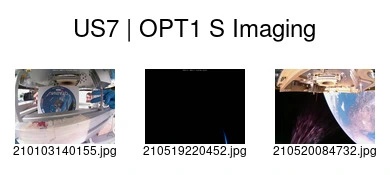
First mosaic image downloaded from GAUSS OPT1 Camera System
The above downloaded mosaic image, downloaded on May 20th, 2021, shows three pictures: the first was commanded at ground, during the final assembly test session in GAUSS headquarters, the second was shot during a night pass with the camera pointed to outer space, for calibration purposes, while the third image, the one downloaded, was commanded on May 20th during the morning pass, and GAUSS received a telemetry confirmation of the command execution just moments after the transmission.
Images created by OPT1 are first compressed in jpg using hardware compression present on the OBDH processors, then recompressed into webp image format using Google’s cwebp routine to further reduce file size while retaining the same visible image quality level as the jpg output.
The reduction in file size can reach up to 90%, depending on the subject and the details present in the image.
This reduction also guarantees that the preview mosaic image con be downloaded within a single satellite pass over the groundstation, thus expediting the selection of the high-resolution image that will be downloaded next.
This camera system was developed to show how terrestrial DIY equipment can be successfully modified to sustain space conditions, maintaining a good level of reliability and performance.
GAUSS is now working on the commissioning of UNISAT-7 main Earth Observation payload, GAUSS OPT0 Camera System, designed for narrow field-of-view and longer focal distance, for a much smaller ground separation distance and greater resolution.

